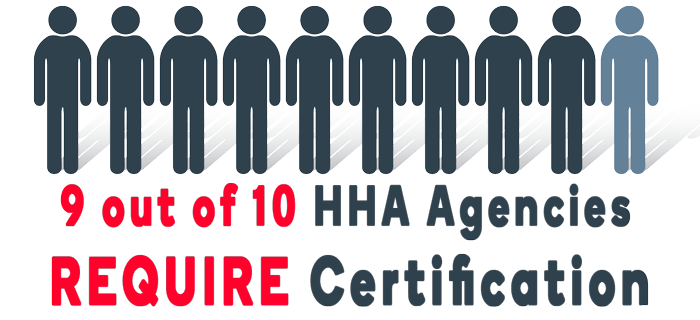
Because HHA certification requirements vary by state, home health aides may need to satisfy additional requirements if they move to another state to work.
| Select a State for more information | |
|---|---|
| Alabama Alaska Arizona Arkansas California Colorado Connecticut Delaware District of Columbia Florida Georgia Hawaii Idaho Illinois Indiana Iowa Kansas Kentucky Louisiana Maine Maryland Massachusetts Michigan Minnesota Mississippi Missouri | Montana Nebraska Nevada New Hampshire New Jersey New Mexico New York North Carolina North Dakota Ohio Oklahoma Oregon Pennsylvania Rhode Island South Carolina South Dakota Tennessee Texas Utah Vermont Virginia Washington West Virginia Wisconsin Wyoming |
In order to work as a home health aide (HHA), one must first have the proper educational requirements.
In some cases these are different depending on what organization they will be employed by or working for. This can include Medicare/ Medicaid funded organizations that require formalized training while private companies do not have this obligation but still offer opportunities such as certification programs and workshops.
In order to be a certified home health aide, home health aides must complete a training program – usually offered by community colleges, private schools or employers offering jobs in the field such as home health agencies.

Agencies who receive Medicare or Medicaid (most agencies!) require 75 hours of training in order to receive home health aide licensure. Home health aides must complete 16 hours of training before working with patients (also referred to as clients).
This is the minimum Federal requirement and many states require additional training.
Home health aides are important to the medical industry. They are highly trained employees ensuring that individuals living with chronic conditions or disabilities can receive care in their homes, rather than hospitals and nursing facilities. Unfortunately this profession has been marred by under-training as well as less strict standards for education across each state’s requirements from where they reside – which means some don’t require very much at all.
The U.S. Department of Labor has a fantastic listing of job and labor resources by state; worth a look – expand your knowledge!
Map Source: Individual requirements as published by states.